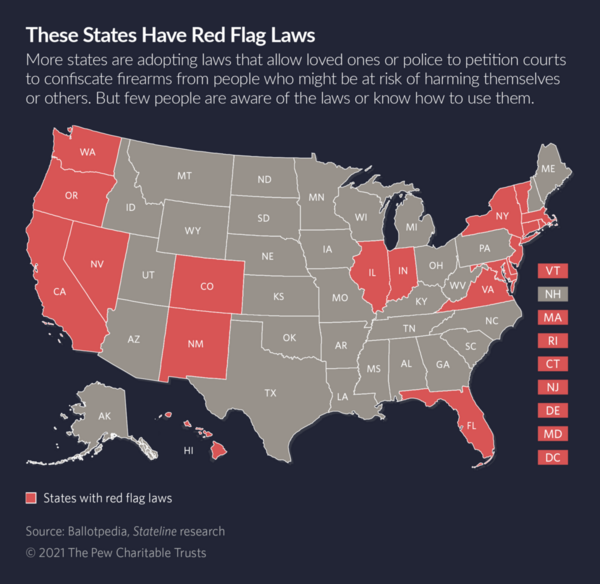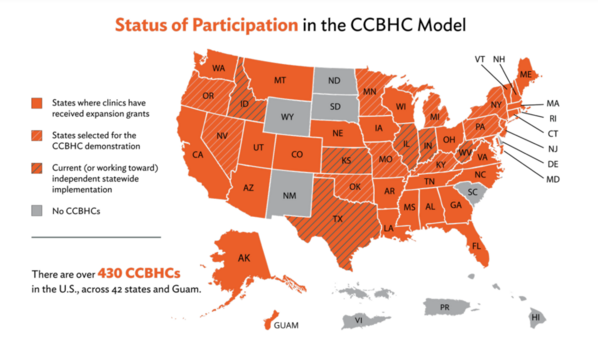President Biden signed into law the bipartisan gun bill before leaving for Europe. (T.J. Kirkpatrick for The New York Times)
On the very day—Thursday, June 23, 2022— that the U.S. Supreme Court ruled against a 100 year-old New York statute that placed limits on firearms in public, the Senate passed (by a vote of 65-33) an historic bipartisan gun bill that broke a decades-long logjam preventing the passage of any gun restrictions. Then, the announcement of the Court’s overturn of Roe v. Wade on Friday overshadowed the same-day House passage (by a vote of 234-193) of the bipartisan gun bill, followed by President Biden’s signature on Saturday. One of the most consequential weeks in Washington, DC, brought both celebration and alarm to advocates for gun legislation to reduce violence in America.
The new gun law, “The Bipartisan Safer Communities Act (S. 2938),” authorizes funding for a numerous of programs that have the potential to address and reduce trauma through investments in mental health. The law provides opportunities for trauma-prevention and resilience-building coalitions in local communities to shape how states and localities will use the new funding. Click here for a three-page summary of the law (also attached).
Among the provisions where local PACEs communities could influence how programs are structured and prioritized include:
Mental health and firearms provisions

—A $750-million allocation for states to create and administer laws aimed at limiting firearms for individuals a court has determined are a threat to themselves or others. This includes so-called “red flag” laws (aka extreme-risk protection orders or ERPOs) with due process protections. While the House of Representatives had passed the Federal Extreme Risk Protection Act (included in the Protecting Our Kids Act) that created a stronger federal red flag law, the bipartisan law at least creates incentives for states to pass their own laws. To date, 19 states plus the District of Columbia have passed “red flag” laws.
The funding is also for states to establish and administer specialized courts, including drug, mental health, and veterans courts.
—Provides $250 million in funding for community-based violence prevention initiatives.

—Expands community mental health services demonstration program nationwide, championed by Sens. Debbie Stabenow (D-Mich.) and Roy Blunt (R-Mo.) and the National Council for Well Being, to make mental health and substance use treatment readily available without regard to ability to pay. Under the law, states and territories can apply to participate in the demonstration project and funding is made available for planning grants for states to development proposals to participate. The National Council provides detailed information on the model (Certified Community Behavioral Health Clinic, CCBHCs) and where it exists in the states. The National Council president and CEO, Chuck Ingoglia, said in a recent press release that expanding (CCBHCs) nationwide “is transformational and will dramatically expand access to comprehensive and lifesaving services while helping support and grow the behavioral health workforce.”
—$120 million over four years to prepare and train community members and first responders on how to respond appropriately and safely to individuals with mental disorders. This funding would support programs such as the National Council’s Mental Health First Aid that is informed by trauma research.
—$40 million for the National Child Traumatic Stress Network.
—$240 million over four years for programs that “increase awareness of mental health issues among school-aged youth, provide training for school personnel and other adults who interact with school-aged youth to detect and respond to mental health issues, and connect school-aged youth who may have behavioral issues and their families to needed services.” (see Senate summary attached). It also includes a set-aside of $28 million for grants to support trauma-informed care in school settings (as authorized in the 2018 opioid law, P.L. 15-271).
—$150 million for the National Suicide Prevention Lifeline for fiscal year 2022. This funding supports the implementation of the three-digit (9-8-8) Suicide and Crisis Lifeline to be launched in July for people in suicidal crisis or emotional distress.
Other provisions related to schools
—$1 billion allocated over fiscal years 2022-2026 to be divided equally between carrying out School Based Mental Health Services Grants and Mental Health Services Professional Demonstration Grants. The services grants aim “to increase the number of qualified mental health services providers that provide school based mental health services in school districts with demonstrated need.” (Senate Summary). The summary describes a second grant program that “will help train and diversify the pipeline of school counselors, social workers, and school psychologists.”
—$1 billion for School Improvement Programs under the Elementary and Secondary Education Act (ESEA) to support evidence-based practices intended to increase attendance and engagement of students. The law requires that states to make awards on a competitive basis to high-need local educational agencies. Programs to “support safe and healthy students” include those intended to create positive school climates, address drug and violence prevention, promote parent involvement, provide training and professional development for school personnel and others in “prevention, education, early identification, intervention mentoring, recovery support services and, where appropriate, rehabilitation referral, as related to drug and violence prevention.” The website of the National Center on Safe and Supportive Learning Environments provides a link to the section of ESEA that describes the programs that are funded.
—$50 million for the 21st Century Community Learning Centers program which “funds extracurricular, after school and summer program, with a focus on new funding to target programs for older youth.” (Senate Summary)
Conclusion
As the bipartisan Safer Communities Act is implemented, there are many opportunities for PACEs coalitions to work with state and local government, especially local education agencies, to shape programs and activities informed by PACEs science. While there are gun violence researchers who question whether the law will result in fewer mass shootings or less interpersonal gun violence (New York Times article “For Gun Violence Researchers, Bipartisan Bill Is a ‘Glass Half Full’”, June 27, 2022), the bill’s mental health provisions do address the nation’s long-term under-investment in mental health that rose to a public health crisis of staggering proportions during the pandemic. The public’s clear and loud voices of outrage—especially after Uvalde, Texas, and Buffalo, New York—were heard by members of Congress. They broke the logjam this time and paved the way for more to be done in the future.





Comments (0)